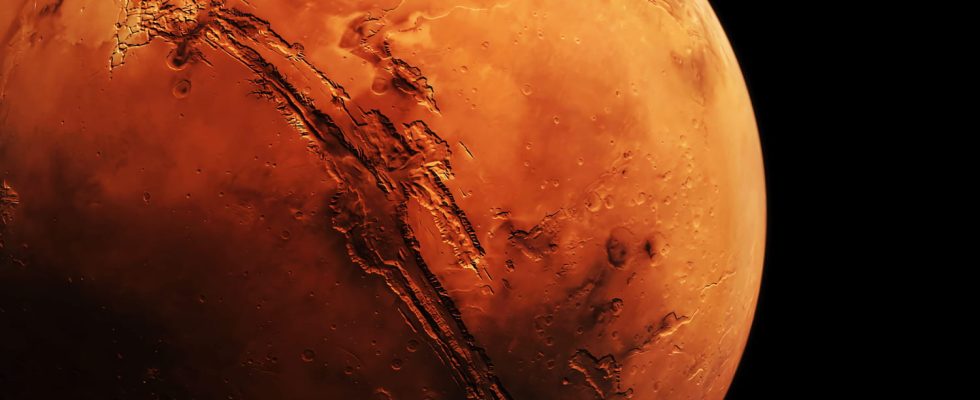Scientists have managed to film a landscape resembling a Grand Canyon on the planet Mars. The video has been revealed.
It is a Grand Canyon landscape, but unlike the American gorges, this one is inaccessible to humans because it is light years away. The European Space Agency has released a video of the Mars flyby which shows that the surface of the Red Planet is full of surprises. It notably houses what looks like a giant labyrinth: the “Noctis Labyrinthus” (or “Labyrinth of the night”).
This curiosity of the Martian landscape is located between the immense canyons of the Valles Marineris and the volcanoes of the Tharsis Bulge – the largest known volcanoes in the solar system – including Olympus Mons, a must for planetology enthusiasts. It is also the volcanic activity of the planet which led to the formation of the labyrinth spanning nearly 1,200 kilometers. A labyrinthine valley almost as big as Italy!
Under the effect of volcanic events, the Martian crust has stretched in height and the tectonic activity of the planet has led to thinning and subsidence of the crust, as well as the formation of faults explains theEuropean Space Agency.
These images of Noctis Labyrinthus are taken from observations by the Mars Express probe and were captured in eight different orbits around the planet. They were “combined with topographical information from a digital terrain model to generate a three-dimensional landscape. Each second of the video comprising 50 distinct images rendered according to a predefined camera path,” specifies the agency.
Unimaginable faults on Earth
The heights of Noctis Labyrinthus represent the surface level of Mars before land changes caused by millions of years of volcanism and tectonic activity. The dug faults – called “graben” meaning “graves” – are several kilometers deep and can also be very wide.
The most reliefs Important data show that faults can be 30 km wide and 6 km deep. In these fissures, gigantic landslides created additional relief on the slopes of the faults. And in the absence of landslides, dune fields are formed under the effect of sand pushed by Martian winds.
The Mars labyrinth continues to evolve and the European Space Agency’s Mars Express probe still orbits the red planet. Its objective: to observe and map its surface, study its atmosphere and explore “the way in which various phenomena interact in the Martian environment”. We look forward to the next images.
